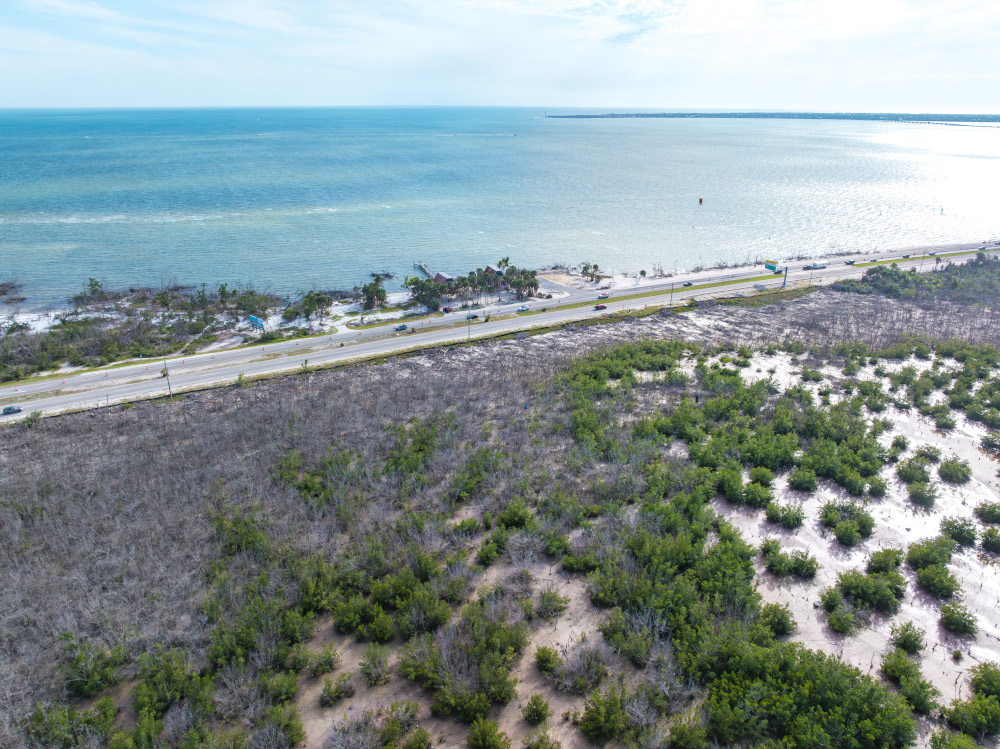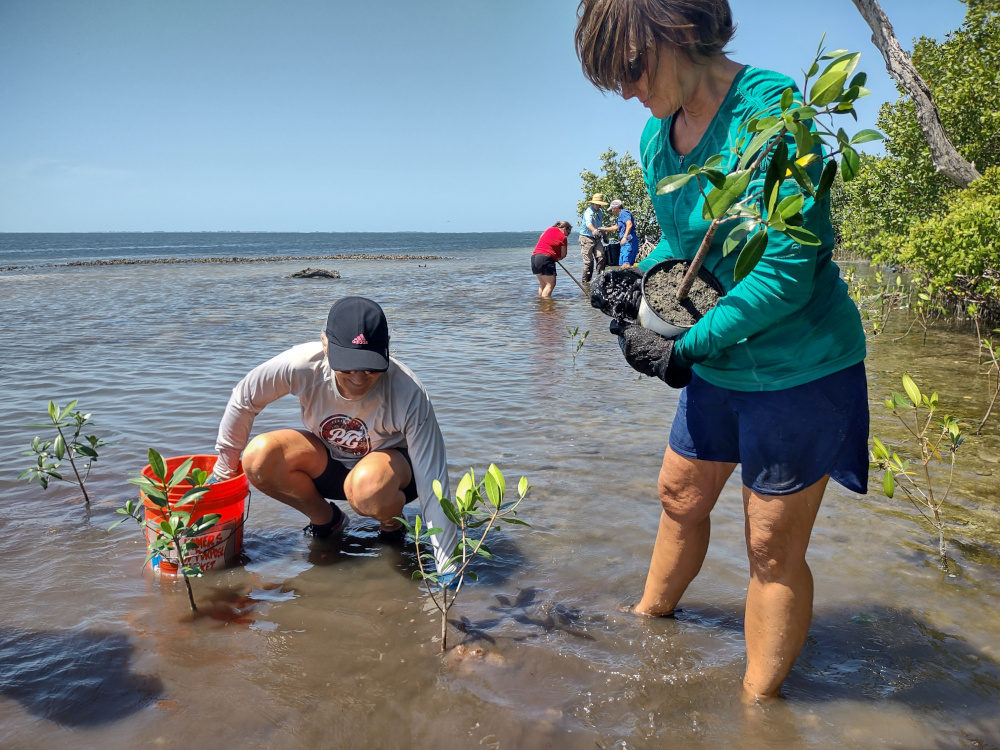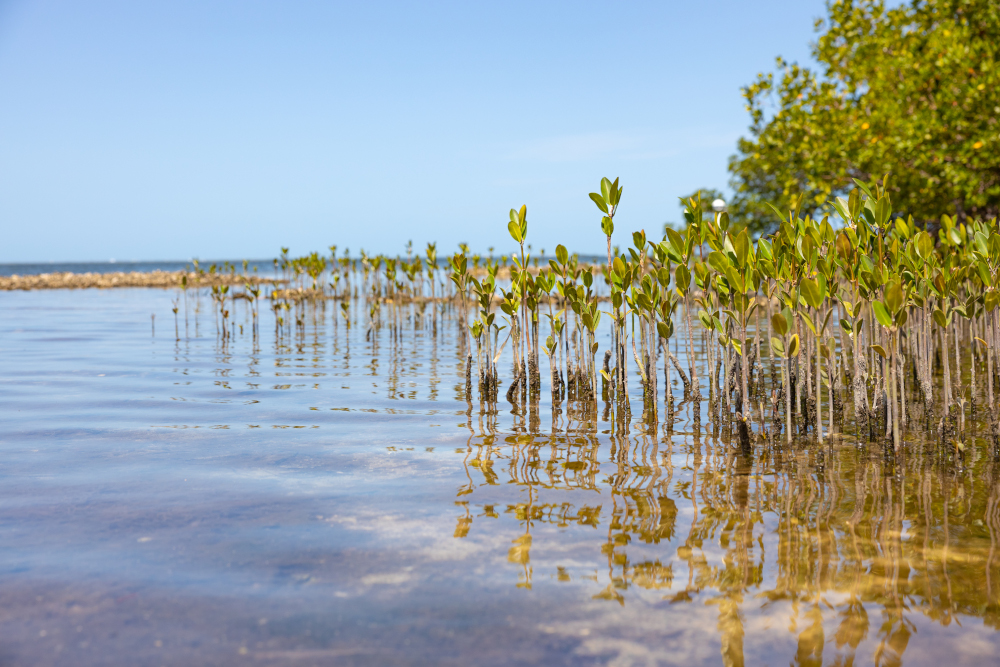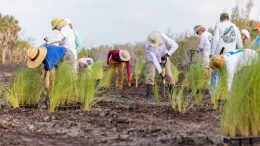Hurricane Charley made landfall on the Florida Gulf Coast near Fort Myers on Aug. 13, 2004, driving a six-plus-foot storm surge that destroyed vegetation in 95% of mangrove forests on four-square-mile North Captiva Island.
In 2022 Hurricane Ian’s storm surge topped 10 feet on 10.5-square-mile Sanibel Island, just south of Captiva, killing most of its mangrove trees. Hurricane Helene, which made landfall in the Big Bend area of Florida in September 2024, created a storm surge up to seven feet high around Tampa, and that October Hurricane Milton produced damaging surges along Florida’s central and southwest Gulf Coast. Both wiped out more mangrove forest.
Even though many of the mangroves died, the trees protected the coastline and communities by absorbing much of the energy of the surges and significantly reducing the energy and height of storm-driven waves.
Mangrove forests do this around the world. Research shows that without them, 15 million more people globally would experience flooding every year.
“Those mangroves did their job,” says Kealy Pfau, coastal watch director for the Sanibel-Captiva Conservation Foundation, a land trust founded in 1957. “They took one for the team.”

But with more frequent and severe hurricanes, it also is becoming clear that this vital front line of defense can’t rebound fast enough without help.
Fortunately multiple projects aim to help the trees — and through them, human communities.
The Sanibel-Captiva Conservation Foundation started restoring Sanibel’s historic mangrove forest after Hurricane Charley, in partnership with the city of Sanibel and MANG, a local outdoor gear store. In 2020 the organization launched restoration on nearby Hemp Key, another area destroyed by Charley. In all the effort has planted more than 20,000 mangroves, relying heavily on public participation.
“We’ve taken hundreds of people out to plant mangroves,” most of them red mangroves, says Pfau. Of southwest Florida’s three species — red, black, and white — these are the easiest to restore, as they grow right on the shoreline and have large and easy to find seedlings or propagules. The Foundation collects propagules and grows them in a nursery until they have a root system and some leaves before planting them at a restoration site.

In addition to the nursery, the organization runs a mangrove adoption project that taps people to grow mangroves in their homes.
“It’s not symbolic adoption, but an actual one,” Pfau says. “We collect propagules, plant them in little pots, and give them to people we call mangrove mamas and propagule papas.”
Individuals, daycare centers, retirement communities, schools, restaurants, and resorts have adopted trees — a total of about 4,000 in the past three years. The organization collects and pots propagules from August to October and plants seedlings in restoration areas from December to June.
Volunteers also are key to a restoration project in South Florida and the Keys by the nonprofits Coastlove and Plant a Million Corals Foundation. That effort has planted about 7,100 mangrove trees since December 2022.
“We invite locals or visitors to come work with us,” says Lanier Whitton, who helps manage a nursery of about 5,000 propagules. “It is a good way to get people of all ages involved.”
Coastlove also has a Mangrove Prop Drop, a bin where people can donate legally collected propagules (meaning not taken from the ground or inside a park).
Harmful Hydrology
Hurricanes aren’t the only thing killing off mangroves. Sea-level rise caused by climate change is a major threat. Human changes to natural hydrology, or movement of water, is another.
“It takes a lot to kill a mangrove forest, but certain things are their Achilles heel. One is altered hydrology,” says Kathy Worley, director of environmental science for the Conservancy of Southwest Florida.
Conservancy biologists started studying an area known as Fruit Farm Creek on Marco Island, south of Naples, in the 1980s. The forest there collapsed in the mid-1990s, and scientists determined altered hydrology was to blame. Over decades development surrounded some 2,560 acres of mangrove forest there, causing it to fill with stormwater after heavy rains, sometimes for months. Most mangroves do best with their roots dry about 70% of the time, and the trees essentially drowned.
The Conservancy, with multiple partners — including Rookery Bay National Estuarine Research Reserve, City of Marco, Collier County, and Coastal Ecology Group — started a pilot project in 2012 to restore the local hydrology.
“We had to hand-dig channels through the area,” Worley says. “You can’t get big equipment in because of the squishy ground, and we also didn’t want to further compact the soil.”
That project allowed trees to reestablish naturally rather than planting them.
“I’m a big proponent that mangroves know where to plant themselves as long as there is a seed source,” Worley says. “There were some trees on the edges [of the restoration area], so propagules could float in. Within five years, we had a little juvenile mangrove forest. It was amazing how fast it happened. So, we could say, OK, this will work.”
Based on that evidence, the organization began a larger scale restoration in March 2020, funded by a grant from NOAA. Construction of tidal channels and installation of culverts in two die-off areas began in December 2021 and was completed by February 2023. The organization conducted post-restoration monitoring at three-month intervals for the first year, switching to six-month intervals beginning in February 2024.
Monitoring: ‘Everything Is Research’
Monitoring is key with this or any type of habitat restoration.
“We go back to these areas on an annual basis and check survival rates, basically seeing if trees are there or not,” says Pfau of the Sanibel Island and Hemp Key projects. “It takes 10 to 15 years for a mangrove tree to mature, and that’s if conditions are ideal. We are nowhere near ideal conditions, especially with setbacks like other storms.”

The Foundation regularly measures elevation at the site to see whether storms have changed the shoreline topography, monitors sea-level rise, and tests the water quality.
“Where we historically have seen mangroves and they’re not recovering on their own, we try to figure out why,” Pfau adds. “It’s usually shoreline change or lack of propagules. Sometimes we can’t figure it out, so we plant some trees and see what happens, and that may show us what’s affecting them. Everything is research.”
This work so far has not been affected by federal budget cuts or staff reductions.
“It might change our way of thinking about what grants to apply for, or if grant funding isn’t available, we may have to think outside the box,” Pfau says. “We do rely on grant funding for some of these projects, but a lot of our funding comes from local donors.”
Monitoring by the Conservancy of Southwest Florida includes comparing plots throughout a stressed area with those in more healthy areas.
“Every tree is tagged, and we look at growth factors, growth rates, diameter of the tree trunk,” Worley says. “What you’d expect to see with a growing forest is a lot of seedlings growing into trees and eventually a mature forest with very few small trees. A mature mangrove forest is just trees and canopy. Canopy coverage is another indicator of whether the forest is progressing. We categorize each tree, whether stressed, healthy, or dead. If trees are going from stressed to healthy, you know you’re going in the right direction.”
The team also keeps an eye on the hydrology in restoration areas and monitors the types and concentrations of fish and terrestrial invertebrates. Lots of crab holes in the sediment are a good indicator of a healthy mangrove forest, Worley points out, as are multiple species of fish.
Should We Restore?
While these restoration efforts seem to be working, like most things these days, the work isn’t without controversy.
“We need to be very selective about what we restore,” Worley says. “For one thing, you have to restore areas that historically had mangroves. If it did not, there is probably a reason why. We need to choose areas that make the most sense and put money in those areas.”
That includes taking sea-level rise into consideration, because unless forests can build up enough sediment to keep up with that rise, they won’t make it.
“Marshes used to march inland, but there is no room to march anymore,” Worley explains. “They run into development or a road.”
Another big issue: What do we do in areas that are suffering die-offs but have not been as severely affected by humans?
“Do we let the process evolve naturally? That’s a question that needs to be asked,” says Worley. “I don’t think there is a right or wrong answer. I do think we should revitalize areas that are stressed and it is probably our fault, and where we can make a difference. But we have to set priorities in the future. There is only so much money we can throw at this.”
There is also the question of which restoration approach is the best.
“A lot of people plant trees, I think it’s a feel-good thing,” Worley adds. “But so long as there is a seed source, the mangroves know how to plant better than we do.”
If there isn’t a seed source, she adds, planting is the only way to get trees back. And she believes getting them back is a worthy goal.
“These are just magnificent forests and we need to give them every chance we can,” she says. “I don’t want to live in a world without mangroves. They provide coastline stability and prevent erosion — without them half of Florida would not be here. They’re also habitat for about 75% of all marine life and really help absorb carbon out of the atmosphere.”
Good reasons, along with hurricanes, to keep giving mangroves a helping hand.

Previously in The Revelator:
Coastal Restoration: Recycled Shells and Millions of Larvae — A Recipe for Renewed Oyster Reefs


